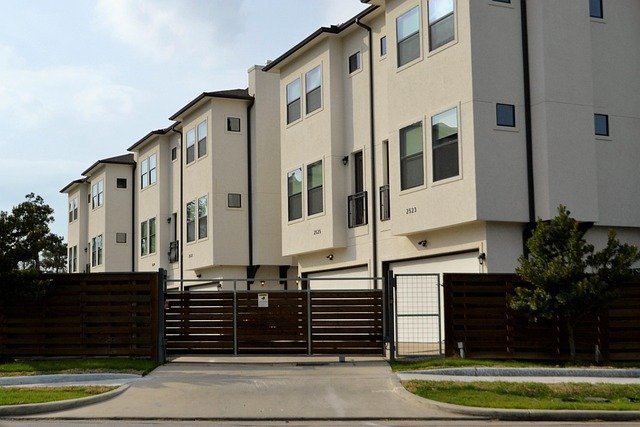Best Housing Projects Under Construction: Discover the Top New Real Estate Developments
The demand for housing projects under construction is growing rapidly as buyers seek modern amenities, smart layouts, and strong investment potential. Whether you’re searching for new real estate projects near me, exploring residential projects nearby, or looking for affordable housing near me, the market today offers unmatched options for every budget. This guide reviews the top new township projects and explains how to choose developments that promise both comfort and long-term value appreciation.

Modern housing projects under construction represent a significant shift in how communities are designed and developed. These developments cater to diverse needs, from first-time homebuyers seeking affordability to investors looking for long-term returns. As urbanization accelerates and infrastructure improves, new residential projects continue to emerge across various regions, offering contemporary living spaces with enhanced connectivity and amenities.
The Rising Demand for Modern Housing Projects Under Construction
The demand for housing projects currently under construction has surged due to several interconnected factors. Population growth in urban centers has created pressure for additional residential units, while younger demographics prioritize modern amenities such as smart home technology, sustainable design, and community facilities. Many buyers prefer purchasing properties during the construction phase to secure better pricing and customize certain features before completion. Additionally, government initiatives promoting affordable housing and infrastructure development have stimulated new project launches. Developers are responding by creating mixed-use communities that integrate residential, commercial, and recreational spaces, addressing the lifestyle expectations of contemporary homebuyers.
Key Factors to Consider When Choosing a New Real Estate Project in Your Area
Selecting the right housing project requires careful evaluation of multiple elements. Location remains paramount, as proximity to employment hubs, educational institutions, healthcare facilities, and transportation networks directly impacts daily convenience and property appreciation. Buyers should verify the developer’s track record, examining previous projects for quality, timely delivery, and customer satisfaction. Legal due diligence is essential, including confirmation of clear land titles, necessary approvals, and compliance with local building regulations. Infrastructure quality matters significantly, encompassing water supply, electricity backup, sewage systems, and road connectivity. Amenities such as parks, fitness centers, security systems, and parking facilities add value but should align with actual needs rather than marketing appeal. Future development plans for the surrounding area can indicate potential appreciation or challenges ahead.
Affordable Housing in Your Area Redefining Urban Accessibility
Affordable housing initiatives have transformed access to homeownership for middle and lower-income families. Governments and private developers increasingly collaborate to create residential projects that balance cost efficiency with quality construction. These developments often feature compact yet functional layouts, shared amenities, and strategic locations near public transportation to reduce commuting costs. Affordable housing projects typically incorporate energy-efficient designs to lower utility expenses for residents. Many such developments are situated in emerging neighborhoods where land costs remain reasonable, though connectivity to established urban centers continues improving through infrastructure expansion. Financial institutions have also introduced specialized mortgage products with lower down payments and favorable interest rates to support affordable housing purchases, making homeownership more attainable for first-time buyers.
The Growth of New Township Projects and Integrated Living for the Future
Township projects represent comprehensive planned communities that integrate residential zones with commercial spaces, educational facilities, healthcare centers, and recreational areas within a single development. This integrated approach reduces dependency on external infrastructure and creates self-sufficient neighborhoods. Modern townships emphasize walkability, green spaces, and community engagement through thoughtfully designed public areas. Developers incorporate sustainability measures such as rainwater harvesting, solar power, waste management systems, and landscaping with native plants. These projects often span large land parcels, allowing phased development over several years while maintaining architectural coherence. The township model appeals particularly to families seeking comprehensive lifestyle solutions and investors recognizing the long-term appreciation potential of well-planned communities. As remote work becomes more prevalent, townships located in suburban or peripheral areas gain attractiveness by offering spacious living environments without sacrificing essential amenities.
Understanding Pricing and Investment Considerations
Property prices for housing projects under construction vary significantly based on location, developer reputation, project scale, and included amenities. In major metropolitan areas, apartments in new developments typically range from moderate to premium pricing depending on proximity to city centers and infrastructure quality. Suburban townships often offer more competitive pricing per square unit while providing larger living spaces. Buyers should expect initial booking amounts between 10 to 20 percent of the total property value, with payment schedules linked to construction milestones. Additional costs include registration fees, stamp duty, maintenance deposits, and potential customization charges.
Prices, rates, or cost estimates mentioned in this article are based on the latest available information but may change over time. Independent research is advised before making financial decisions.
How to Evaluate Investment Potential in Residential Projects Nearby
Evaluating investment potential requires analyzing both current conditions and future prospects. Research historical property appreciation rates in the target area to understand growth patterns. Examine planned infrastructure projects such as metro lines, highways, airports, or commercial developments that could enhance connectivity and property values. Assess the supply-demand dynamics by reviewing the number of upcoming projects versus population growth and employment opportunities. Rental yield potential matters for investors seeking regular income, requiring analysis of local rental rates and occupancy trends. The developer’s financial stability and construction timeline credibility affect project completion risks. Market cycles influence optimal entry points, though timing the market perfectly remains challenging. Diversification across different property types or locations can mitigate investment risks. Consulting with real estate professionals, financial advisors, and legal experts provides valuable perspectives before committing significant capital.
Investing in housing projects under construction offers opportunities to participate in emerging communities while potentially securing favorable pricing. However, success requires thorough research, realistic expectations, and careful selection aligned with individual financial goals and lifestyle needs. As the real estate sector continues evolving with technological integration, sustainability focus, and changing demographic preferences, staying informed about market trends and regulatory developments remains essential for making sound property decisions.




